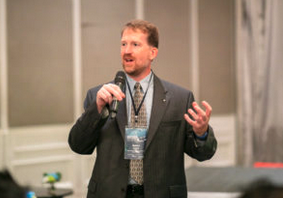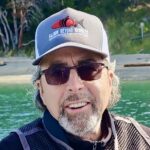 I was fortunate enough to attend the Seafood and Fisheries Emerging Technologies Conference last month in Bali. This wasn’t the first “post-pandemic” conference I’ve attended, but it did have a liberated vibe to it. The mood was upbeat, and not only because the beach was a short walk from the hotel; it also reflected a collective energy and optimism about making “Impact at Scale for a Sustainable and Resilient Future,” the theme of this year’s conference.
I was fortunate enough to attend the Seafood and Fisheries Emerging Technologies Conference last month in Bali. This wasn’t the first “post-pandemic” conference I’ve attended, but it did have a liberated vibe to it. The mood was upbeat, and not only because the beach was a short walk from the hotel; it also reflected a collective energy and optimism about making “Impact at Scale for a Sustainable and Resilient Future,” the theme of this year’s conference.
Claire van der Geest (principal at Seven Seas Consulting and author of three EM4Fish feature articles) was the lead organizer of SAFET 2023, which drew over 200 attendees from 35 countries. Claire’s amazing work was supported by a 14-member steering committee.
One member of that committee is Bubba Cook, who founded SAFET back in 2014. I cornered him for a brief interview after he’d returned home to New Zealand.
Bubba, what did this conference tell you about the evolution of fisheries management?

“Well, one key takeaway for me is that technology is advancing at a far greater rate than we could have anticipated, making the once impossible not only possible but practical. Especially in the AI space, we have seen that technology mature immensely over the last couple of years and expect that it will continue to do so even more in the coming years.”
What were two or three presentations that have stayed with you post-conference?
“One presentation that I found incredibly interesting was the presentation delivered by CSIRO’s Leslie Roberson, who demonstrated how they were using an old technology, radar, in a new way to fill in the gaps for vessel activity in spite of efforts of those vessels to deliberately or inadvertently hide their activity. This emphasizes how there is virtually nothing that happens on the surface of the ocean that cannot be seen with an appropriate level of time and effort. The second was the special session from Dr Li-Chuan Liuhuang and the team from Taiwan to demonstrate cutting edge technology incorporating blockchain to address human and labor rights at sea. A combination of emerging and advancing technologies makes full accountability of human and labor rights in fisheries entirely possible.”
Are you confident at this point that EM is here to stay in fisheries management?
“In the early days, some 20+ years ago, EM was touted as the holy grail for fisheries monitoring, but was more often than not dismissed as technically and economically impractical. That is not the case today, with massive advancements in hardware and software, but especially with the potential of edge computing and artificial intelligence to dramatically reduce review costs while improving data collection and integrity. There will always be a need for human observers to perform certain tasks, not the least of which is benchmarking EM operations, but I expect that EM will become the standard across all fleets where human observers have historically not been deployed for cost or logistical reasons.”
What’s your read on the momentum of the fishtech space overall? Is it broadening? What are you sensing about uptake across the globe?
“I’m incredibly optimistic about the potential of technology to improve conditions across all food systems, not just seafood. We are at an inflection point where society is becoming increasingly more concerned about how and where their food is produced. What used to be placed in the “too hard basket” is not only possible, but wholly achievable with technology advancements that facilitate not only onboard catch monitoring, but full bait-to-plate traceability that could facilitate substantial market leverage.
“Overall, it seems to me that technology advancements are making traceability and transparency an inevitability, partly driven by the risks associated with illegal fishing as well as human and labor rights. Early adopters of facilitating technologies and systems will reap the benefits of transparency and traceability, while those resistant to it will find their available markets increasingly restricted.”
The Asia-Pacific Electronic Monitoring Community of Practice and Innovation
Working partly with funds from SeaPact, one of SAFET’s next steps is to establish a Community of Practice (CoP) in the Asia-Pacific region. This CoP will serve—among other things—as a regional convening entity and resource hub for fisheries management, seafood industry, EM/fishtech and supply chain stakeholders. If you’d like to be notified as plans come into focus, please provide your info here.
A Note on Gender Equity
Another steering committee member, Janelle Hangen, pointed out to me that only about 35 women participated at SAFET 2023, so clearly a great deal more needs to be done in attracting and advancing women in this sector. I was surprised to hear the number was so low, perhaps because all six of the panelists in a session I co-moderated were women. In any case, I’d like to suggest something to my fellow middle-aged-and-up men out there. Make way. If you hold a management role your job is to identify, empower, and advance your best motivated, hardest working hires, irrespective of gender. If you’re already doing so, good on you, but if you aren’t, well, you’re missin’ the boat!


